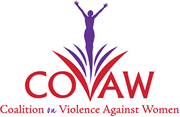The Girls Advocacy Alliance (GAA) was a 5-year joint project (2016-2020) led by the Dutch offices of Plan International, Terre des Hommes, and Defense for Children – ECPAT and funded by the Ministry of Foreign Affairs.
The project aimed at promoting equal rights and opportunities for girls and young women in 10 countries spread across Africa and Asia. The program in Kenya was implemented by Coalition on Violence Against Women (COVAW) in Kwale County, Plan International in both Nairobi and Kisumu Counties, Nyanza Initiative for Girls Education and Empowerment (NIGEE) in Kisumu, and Women Empowerment Link (WEL) in Nairobi County.
The GAA project sought to address (Commercial) Sexual Exploitation of Children (CSEC) and Child Trafficking (CT) in Kwale County and economic exclusion as a cross-cutting issue. The overall goal of the project was to ensure girls and young women in Kenya are free from all forms of GBV and are economically empowered.
The program used the following approaches and strategies: Lobby and advocacy, Media awareness, Knowledge and research, Capacity Development, and Linking and Networking.
Key Achievements
- COVAW lobbied for the costing of the National Plan of Action Against Sexual Exploitation of Children 2018-2022;
- lobbied and provided technical support to the ongoing Sexual and Gender-Based Violence Bill (Kwale County),
- lobbied for the validation and gazettement of the Counter-Trafficking in Persons Victims Trust Fund Guidelines by the Counter-Trafficking in Persons Secretariat (CTiP).
Overall COVAW reached over 1,000,000 community members during the five years implementation period both directly and indirectly. COVAW identified over 400 girls who were out of school and at risk of exploitation.
Out of this, 305 were trained and mentored as Girl Advocates on advocacy issues around sexual and gender-based violence and economic exclusion; 210 girls were trained on Economic Empowerment and linked to business opportunities or vocational training centres; increased awareness and attitude change among 2,100 community members who were reached with interventions on awareness and attitudes change on addressing Gender-Based Violence (GBV) while Gender Committees were established across 21 villages in the county to advance GBV issues and support in the identification, reporting, and follow-up of cases.
COVAW contributed to the development of the following resources under the GAA project:
National Plan of Action Against Sexual Exploitation of Children in Kenya 2018-2022.
Newspaper article: It is Time to Legislate the Kwale County Sexual and Gender-Based Violence Bill to Protect Girls and Women. COVAW was the lead agency.
